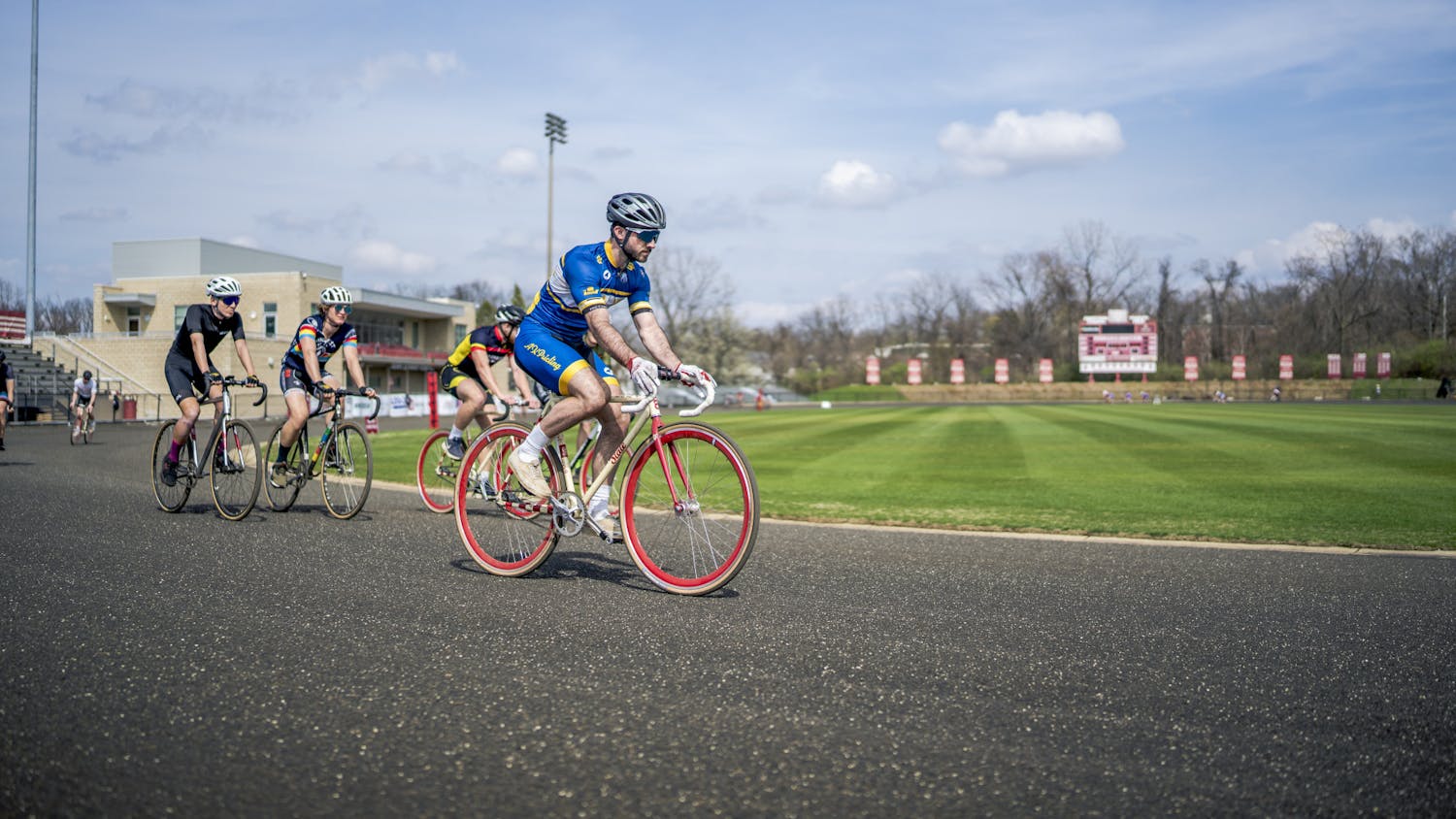“Enormously humane and generous.”
Those were the first words Chancellor Ken Gros Louis used to describe the University’s “Man of the Century,” former IU President Herman B Wells.
From 1938 until 1962, Wells was University president. During that time IU expanded to include the streets, buildings and population that make it what it is today.
“He had a deep love for the University,” Gros Louis said. “He believed deeply in higher education.”
Wells led the University in his vision for education to transform IU into an internationally recognized center of research and scholarship.
But even after Wells retired from his presidency, he did not leave the University.
The IU board of trustees created a lifetime chancellor position for Wells for which he never accepted a salary.
He remained the University’s chancellor from 1962 until 2000, continuing to pour his passion and dedication into IU. In March 2000, the man who transformed IU passed away in his home at the age of 97.
But IU still feels the effect of its 11th president.
By the time Wells left the presidency, he had transformed a “good but not really well-known” university into an internationally known campus, Gros Louis said.
Under Wells’ leadership, the size of the student body grew from 11,000 in 1938 to more than 31,000 in 1962.
“When the incredible opportunity came for me to serve Indiana University, my personal ambitions became ambitions for the University’s greatness, for the realization of the University’s full potential, including the wish that every student, undergraduate and graduate, could enjoy as exciting and stimulating an experience as I had,” Wells wrote in his 1980 autobiography, “Being Lucky.”
A large painting of Wells can be found in the Indiana Memorial Union and in various other campus buildings such as Owen Hall. A bronze statue of Wells is located in the Old Crescent across from the Rose Well House. IU’s main library is named after him, and in fall 2007, a bust of Wells was dedicated in the library’s entrance.
From student to visionary
“From the very beginning, I fell in love with Indiana University,” Wells wrote in “Being Lucky.”
He came to IU as a student in 1922 after spending a year at the University of Illinois. Wells then spent the rest of his life dedicating himself to IU.
“He had an enormous vision for expanding academic areas but also a sense of how the campus would grow long after his presidency,” Gros Louis said. The land where Assembly Hall now stands used to be a farm, but Wells bought it for the University years before anything was built on it.
Wells was questioned for purchasing land the University would “never use.” But as IU’s population grew, the land Wells bought allowed the University to expand.
“Wells was able to look into the future and know how big the campus would become someday,” Gros Louis said. “It is one of the reasons why IU is one of the few public institutions in the Midwest that is self-contained.”
In “Being Lucky,” Wells wrote that when he assumed the presidency in 1938, the entire IU-Bloomington campus laid between Jordan and Indiana avenues on the east and west and 10th and Third streets on the north and south. All the buildings, residence halls, the Union and all other facilities were situated in a quadrangle.
“The time seemed to me appropriate for planning an orderly extension of the campus,” Wells wrote in “Being Lucky.” “We knew we had to move north and east because most of the undeveloped land lay there — north of 10th and east of Jordan.”
Various buildings Wells planned as IU president remain standing, including the IU Auditorium.
“He told me that he wanted to make a statement of what a public education could do, and the symbol of that was the Auditorium,” Gros Louis said.
The results of Wells’ planning allowed for a “University community,” as he referred to it in “Being Lucky.” The campus’s main library, IU Art Museum and the Henry Radford Hope School of Fine Arts, along with the auditorium, are situated between the housing and classroom areas of the University.
“I think by building the auditorium, Wells wanted to say to young people in Indiana, especially to rural (residents), that the world was available to them on this campus,” Gros Louis said.
Dance groups, singers, poets and operas graced the stage, further contributing to Wells’ mission to bring the world to IU.
Loving the crowded streets
Gros Louis described Wells’ good sense of humor as one of his outstanding
personality traits.
“In the course of my journeying, I have witnessed a remarkable evolution in travel,” Wells wrote in “Being Lucky.” “I can remember a time when a gravel road in Indiana was considered a good road.”
But Wells’ good humor wasn’t the only quality people who met him admired.
“I think what people treasured most in him was how much he respected and cared for people’s opinions and really got to know them, not superficially, but in depth,” Gros Louis said.
While at the University, Wells defended the controversial research at the Kinsey Institute for Research in Sex, Gender, and Reproduction and helped create scholarships so more students could attend IU. He advocated the causes of civil rights and desegregation and supported greek philanthropy and the student press.
“He valued everyone who worked at the University, from staff members who worked in the residence halls to the most senior professor, and he treated them all with respect,” Gros Louis said.
Wells had a vision, Gros Louis described, that IU would become a large place long after his presidency, and he made sure the University could grow.
“He was always interested in registration in the fall, and he loved that the streets were crowded,” Gros Louis said. “He would see the long lines at the bookstores and say, ‘That’s good, that’s good.’ He had an enormous interest in everything that happened in the University.”
Originally published in Orienter: June 5, 2008
The father of IU
11th president Wells expanded University with 'enormous vision'

Get stories like this in your inbox
Subscribe





